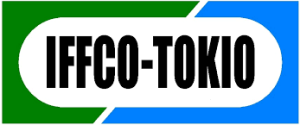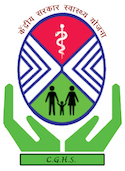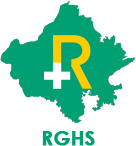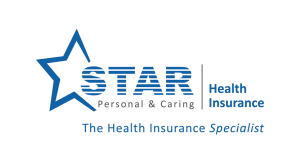Sukhayu Ayurved is the first and only Ayurveda hospital with best in class results for spinal disc problems. We are working on these conditions with the spinal disc for 15 years. Sukhayu is a well-known name in Ayurveda hospitals. Here are the details about spinal disc problems and our view. You can find more comprehensive details about spinal disc problems, you can visit the specialization website for slip disc treatment.
The spinal disc is spongy cushion-like, round in diameter and attached securely by vertebrae to secure them. The intervertebral disc consists of three distinct components- the cartilage endplates, nucleus pulposus, and annulus fibrosus. The cartilage plates are the thin layers of hyaline cartilage between adjacent vertebral bodies & disc proper. The disc gets its nutrition from the vertebral bodies through these end-plates, by diffusion.
Some risk factors for the disc problems are obesity, Advancing age, Poor posture, Cigarette smoking, lack of regular exercise, incorrect lifting technique and poor muscle tone.
Some common types of disc problem are:
- Degenerative disc disease: This is mainly an age-related problem as when a person is at a young age, the disc has a lot of plump and moisture, but with age, this water content reduces and causes friction which results in growth in the bone known as bone spurs around the disc.
- Ruptured disc: It means the protrusion or extrusion of the nucleus pulposus through a rent in the annulus fibrosus. It is not the one-time phenomenon; instead, it is a sequence of changes in the disc, which ultimately leads to its rupture.
- Sciatica: This is a result of the ruptured disc due to the hampered movement and causes pain. It is nerve pain from the spine to the buttock and down the back of the leg.
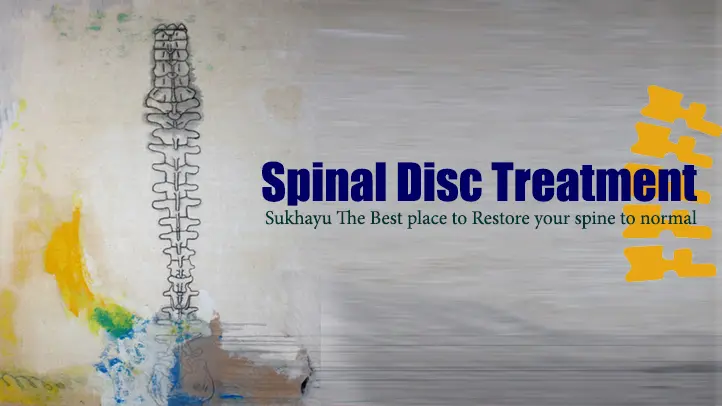
Facts about Spinal Disc Problem
- The majority of disc injuries occur in the lumbar region of the lower back. Only 10% of injuries affect the upper area.
- A ruptured disc is mostly in men and women of ages 30 to 50.
- The common causes for spinal disc problem include Muscular pain, Fracture, Malignancy (cancer present with back pain). A movement like twisting and bending can increase the risk.
- A ruptured disc can heal itself if proper time and conditions are given with care.
- Self-help for disc problems includes avoiding lifting heavy objects; do not sit still for a long period.
- Slow & flexible exercises can help you. Certainly, yoga helps in strengthening of back muscles.
- Treatment of spinal disc problem consists of heat treatment, regular massage, exercise program, and pain-relieving medication.
- A patient needs to go for surgery only in case of severe canal stenosis. More than 85% of cases of spinal disc problems don’t need surgery.
- Diagnosis includes physical examination and determining the risk factors and conditions. Investigations like CT-scan and MRI help to confirm the diagnosis.
Signs and Symptoms of Spinal Disc Problem
The following symptoms of spinal disc problem are common:
- Low backache: The onset of backache may be acute or chronic.
- An acute backache is most severe. This type of pain comes suddenly. Muscular spasm and rigidity of the spine is the primary cause behind such acute conditions. But in some cases, this might be the sudden rupture of the disc, which can cause such acute conditions.
- In chronic backache, the pain is dull and diffuse, usually made worse by exertion, forward bending, standing and sitting in one single position for a long duration. Rest helps in relieving the pain. But when overlooked for a long time, this can lead to serious complications too.
- Sciatic pain: The pain radiates through the gluteal region, the back of the thigh and leg. The pattern of radiation depends upon the root compressed. In a higher-level, the pain may radiate to the front of the thigh.
- Neurological symptoms: Sometimes patient complains of paresthesias, i.e. numbness in the leg or foot and weakness of the muscle. In cases with extensive disc material compressing the roots, the lower limb has a type of paralysis and bowel incontinence.
- Posture: The patient stands with a rigid, flattened lumbar spine. The whole trunk shifts forwards on the hips and the trunk can tilt on one side.
- Movements: The patient is unable to bend forwards; any such attempts initiated severe muscle spasm in the paraspinal muscles.
- Tenderness: There is diffuse tenderness in the lumbosacral (lower) region. Local tenderness in the midline or lateral to the spinous process can occur in some cases.
Causes of Spinal Disc Problem
There are many risk factors, but some leading causes of spinal disc problem are:
- Slipped disc: Due to several other factors like age, weight & lifting weight in severe conditions, the disc gets dislocates and hence causes the spinal disc problem.
- Degenerative disc disease: With age, the spinal disc gets older and loses moisture and damages. In this process, the disc becomes weaker.
- Infection of spinal disc: Tuberculosis is one of the most common causes among infections. But there can be certain other bacterial infections, which might be responsible for the problem with the spinal disc.
- Weight: Excess & over-weight causes extra pressure on the body. Because lower back helds the body straight so body spine need to work extra in this condition. This impacts the posture of the spine and causes the problem with the spinal discs.
- Occupation: People with lots of stress and weight lifting jobs; including pulling, pushing, bending and twisting activities increase the chances of spinal disc problems.
- Smoking: Due to smoking the affinity of hemoglobin to bind with oxygen reduces and hence leads to scarcity in the blood and causing the disc to breakdown more quickly.
- Genetics: Studies show some relation with genes for the condition of spinal disc problems. But in all these cases this is nurture and lifestyle what a person carries with him, which is responsible for problems.
How does it occur?
Spinal disc problem is not a onetime phenomenon; instead, it is a sequence of changes in the disc, which ultimately leads to rupture or degeneration. These changes consist of the following:
- Nucleus degeneration: Degenerative changes are a primary occurrence in the case of spinal disc problems. These changes occur in disc before the displacement of the nuclear material. These changes are
- softening of the nucleus & its fragmentation;
- weakening & disintegration of the posterior part of the annulus.
- Nucleus displacement: The nucleus is under pressure at all times. This pressure weakens the outer ring of fibers (annulus fiber). Within this weak and damaged fibers, the nucleus pulposus starts peeping outside. Basically, this is the condition we all know as a disc protrusion.
- Stage of fibrosis: The body has a tendency to repair any damage. This is the stage of repair. The residual nucleus becomes fibrosed and undergoes calcification. But this kind of repair is not healthy and it makes the condition worse.
- Changes in structures occupying the spinal canal: The nerve root affected is usually the one that leaves the spinal canal below the next vertebra.
- Changes in intervertebral joints: With the loss of part of the nucleus pulposus and its subsequent fibrosis, the height of the disc reduces. This affects the articulation of joints and leads to degenerative arthritis.
Ayurveda about Spinal Disc Problems
Spinal discs represent the Majja dhatu, one of the levels of nourishment which is responsible for smooth movements of the spine. These cushions help the spinal nerves to emerge from every level of the spine. But when these cushions shrink (degenerative disc disease), deflates (Bulging disc) or when these ruptures (Disc Protrusion)- these discs cause compression on nerves and all the problems start appearing.
Pain is the cardinal problem, in all such cases. But can be worse with certain conditions. This pain can radiate to different parts. And that too depends on the location of the problem with the disc. When this is a disc bulge in the cervical, the upper body gets affected. And when a disc causes problems with the lumbar spine, it impacts the lower body.
When something goes wrong with Majja Dhatu, this is Vata dosha which disturbs. As a common notion in Ayurveda text it is well written-
“A person when has probelm with Majja Dhatu, he will remain a patient of Vata Dosha regularly”
Therefore, we need to pacify Vata. But being the science believers, Sukhayu promises more science and less “just something” for the treatment of spinal disc problems.
Ayurvedic Treatment for Spinal Discs
Under the guidance of Vaidya Pardeep Sharma, we work on a three-dimensional model for the treatment of spinal problems. These three dimensions are-
Ayurveda Medicines
Ayurvedic medicines help in pacifying the doshas on one end and on another end, this helps to remove the cellular level of toxins too. Vata is something that we need to pacify, most of the time. But in some cases, there might be involvement of Pitta and Kapha doshas too. So any of doshas it might be, we need medicines when it comes to Ayurveda treatment.
Panchakarma
Panchakarma is a stronger tool when it comes to-
- Removing the toxins
- Relaxation of the muscles
- Increasing the blood supply to regenerate the tissues.
So we aim high with Panchakarma treatment for spinal disc problems. And this helps us in getting the best in class results for problems of the spinal disc.
Yoga
Yoga is all about “Smart Manipulation”. Because most of the spinal problems are associated with mechanical working of the spine either or with the alignment. Therefore it becomes important to use something smart, delicate and result oriented like Yoga for the treatment.
Sukhayu Ayurved for Slip Disc Treatment
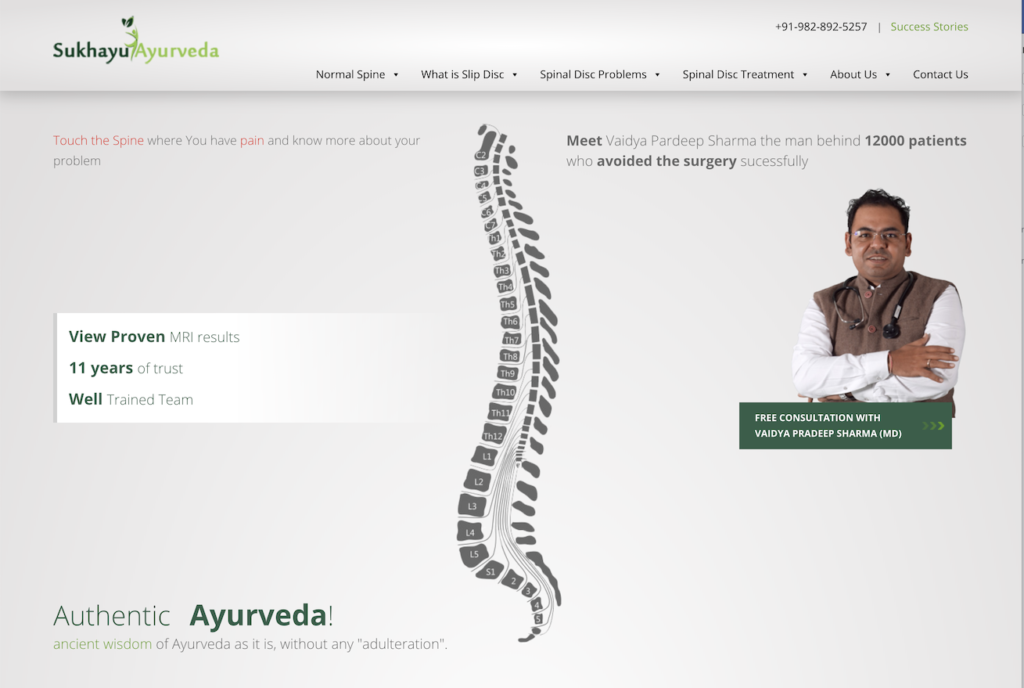
Sukhayu Ayurved is the only place with best in class results for spinal disc problems. We have seen discs moving to their spaces in MRIs. And everything with us is scientific. We never believed in making some nonsense moves of the spine, which can endanger one.
You can go to https://www.slippeddisctreatments.com for a more comprehensive understanding about the treatment of spinal disc problems.




